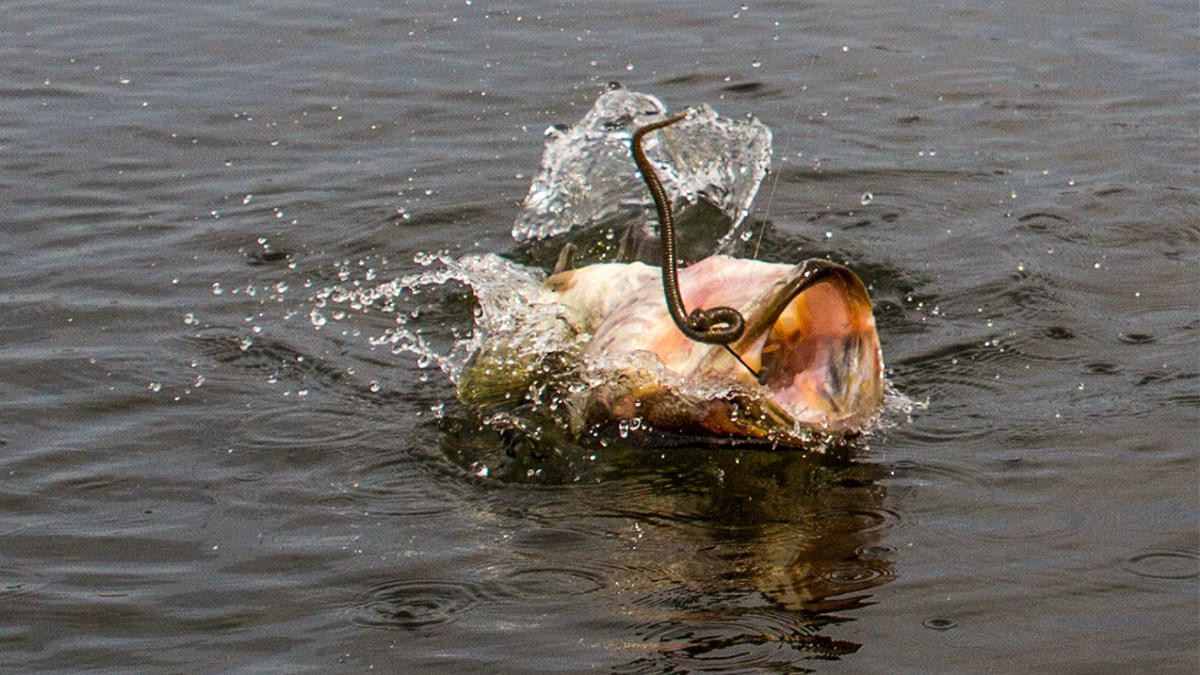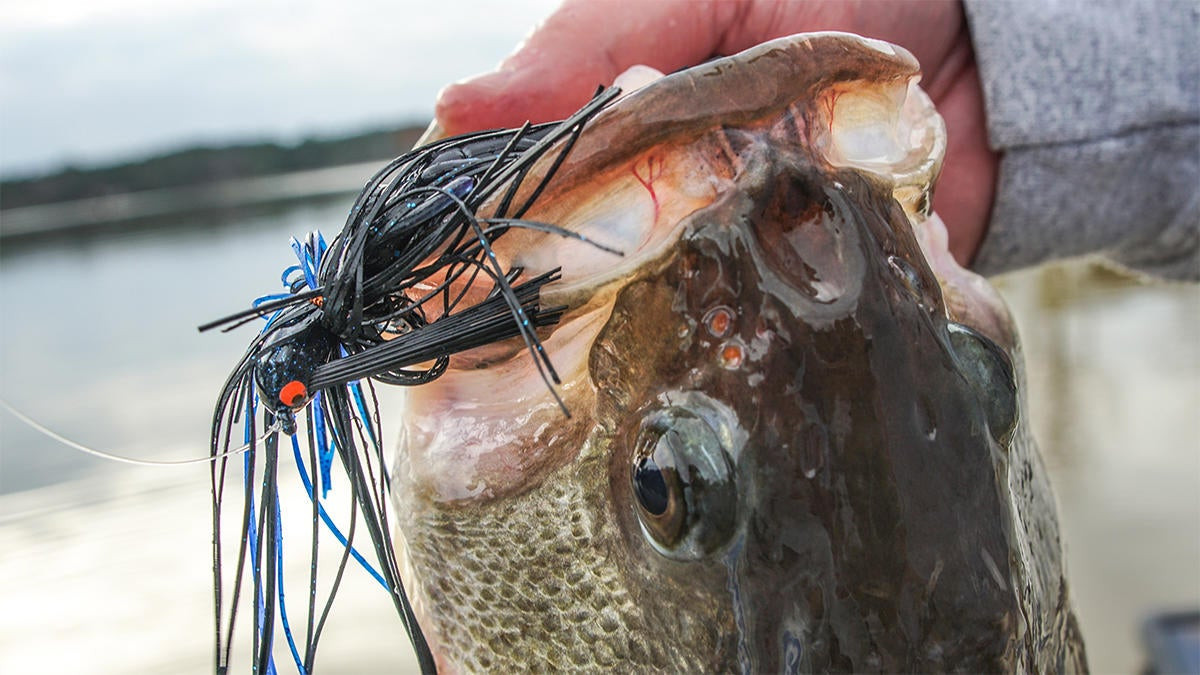Winter bass fishing is a tricky thing this time of year. Both the water and air temperatures seem to keep getting colder and, as a result, the bass are pretty darn sluggish right now. When you combine that lethargy with the usual increase in precipitation that tends to occur in the winter, you’re often left with cranky bass and cold, muddy water. Not an ideal recipe for bass fishing.
But I got to thinking the other day and realized I haven’t really talked much about a pattern that seems to work fairly consistently for me throughout the winter. Anybody can do it and it doesn’t take a bunch of fancy gear to get a bunch of bites.
I’m talking about focusing on edges and irregularities. Hang in there with me and I’ll explain what I’m talking about and my thought process behind it.
The smoke-filled room analogy and comparison to other wildlife
I’ve briefly mentioned this a few years ago, but I certainly think it’s worth revisiting. I’m going to give you an analogy that, in my opinion, makes a lot of sense.
If you were in a room that suddenly filled with thick smoke, what’s the first thing you’re probably going to do in an attempt to get out? You can’t see and your senses are all jacked up, so I’m willing to bet you’re going to start feeling for a wall. Keeping constant contact with that wall will help you navigate around the room while looking for a safe exit. Without touching the wall, you’re helplessly wandering around and quickly becoming disoriented.
Bass do the exact same thing in muddy water; especially in the winter. The fresh mud that’s being dumped into the lake from excessive rains essentially turns the lake into that smoke-filled room we just talked about. They can barely see anything in order to safely navigate, so they’re forced to rely on their lateral lines, which detect vibration and water displacement, to navigate. They snug up tightly to cover and when it’s time to relocate or feed, they stick to some sort of hard edge just like you and I would keep in contact with that wall in the smoky room.
Now, I know “edges” is a painfully broad term to use but let’s not overthink things and make it too complicated. In my area, these edges are often the outside lines of bank grass, stump rows, seawalls, riprap and submerged vegetation. If a bass had shoulders (weird mental image), imagine that bass just working its way up and down these edges with its “shoulder” rubbing along the cover. That’s how the bass travels efficiently and in my opinion, it also gives them an added sense of security in fresh, muddy water.
I also noticed something pretty interesting a few weeks ago. I was on my lunch break, so I was standing at our kitchen island housing a ham and cheese sandwich before my next call. I always look out the window when I eat lunch because I have deer come into my food plot throughout the day.
I started watching this dang chipmunk hop along looking for remnants of this year’s acorn crop and then something “clicked” for me. That rascal was doing exactly what the bass do. It was following an edge. It wasn’t running through the grass. It was hopping along the edge of all my pinestraw. Then I got to thinking even more. Heck, our cat hunts the same way. The foxes do the same thing on our property. Our deer even follow an long edge of hardwoods on our property.
So suffice to say, all these critters feel most comfortable following some sort of edge. I reckon it’s kind of like how most folks drive these days. Not many take the scenic route or backroads anymore. We want efficiency, which is why we follow interstates and highways. The wildlife has it figured out, too.
Focus heavily on irregularities
I was on a shoot with legendary bass angler Larry Nixon about seven years ago and anytime I get in the boat with him, I try to become a sponge. He was catching ’em pretty well and I remember him saying, “If something looks different on an edge, that’s where the bass will be.”
I took that little nugget to heart and started focusing more on the irregularities of edges. Sure enough, it’s turned out to be a major pattern for me this time of year.
Again, let’s not make this too complicated. When I’m talking about irregularities on an edge, I’m just talking about anything that looks slightly different. So if I’m pitching and flipping a relatively ordinary looking grass bed with a straight edge and I run across a small indentation or point, I’m going to make multiple casts to that irregularity. These areas don’t have to be big either and I think that’s what screws folks up sometimes. It’s not always something that’s going to stand out like a sore thumb. These irregularities are often the size of your dinner plate. Just anything different to catch the attention of a bass using the otherwise mundane edge to travel.
My absolute favorite edge and irregularity pattern this time of year is targeting seawalls (here’s an entire article about it); especially concrete ones because they hold so much heat. If you can find muddy water and a concrete seawall on a sunny winter day, you have an excellent chance of catching a giant. I like these seawalls because of course, they’re an edge the bass use to travel, but they’re also full of irregularities. Owners and contractors will put riprap at the base of them and that rip rap is never the same. It’ll come a little further out from the wall in certain places and if you throw a crankbait on these stretches of seawall enough, you’ll memorize the key irregularities over time.
Before we wrap up, I want to mention the importance of boat ramps. Many lakes are littered with residential boat ramps. Before someone gets all fussy about it, I’m not suggesting you fish a busy public boat ramp. But these small residential ramps break up the monotony of the edge these seawalls create. Again, it’s an irregularity and because they’re concrete, they conduct and hold a bunch of heat in the winter. Lots of folks around here catch some absolute giants on these small boat ramps; I’m talking in the 6- to 8-pound range.
Wrapping things up
You might notice that I didn’t get very heavy about which baits to use when targeting these irregularities. I’m not here to sell you a bunch of stuff. I’m here to tell you to use what you have the most confidence in. Let’s keep the simplicity theme going. Personally, I like a 3/8-ounce jig this time of year. I just pitch it around the key areas we discussed. If they don’t bite that, I’ll downsize to a lightweight Texas rig. Crankbaits are also a great choice if you need to cover a bunch of water (long stretches of seawall) and as the water temperatures climb to right beneath the 50-degree mark, a ChatterBait is awfully tough to beat, especially around grass.
Give this an honest shot on your next fishing trip. I’m telling you, with enough patience, this pattern can produce your biggest bass of the entire year.















